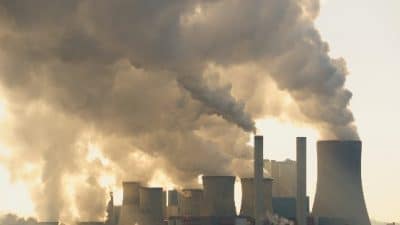
The long-term forest management plan, released today, makes clear that no additional GW lands will be opened up to leasing and drilling, while existing gas development rights remain unaddressed by the plan. On this 1.1-million acre forest, only around 10,000 acres are currently under gas lease and 167,000 acres are subject to private mineral rights. There is no gas drilling on the GW currently.
“This decision protects the existing uses and values of the special George Washington National Forest,” said Sarah Francisco, senior attorney at the southern environmental law center. “As a native Virginian who grew up in the Shenandoah Valley, I’m pleased that the U.S. Forest Service has done the right thing and recognized that the George Washington National Forest—a beloved place for our entire region—deserves protection.”
As the largest national forest in the East, over a million people per year visit the GW and its headwaters ultimately provide drinking water supplies for more than 4.5 million people. The threat of it being opened to large-scale gas drilling had caused widespread concerns about converting popular national forest lands to industrial sites.
Three years ago the Forest Service released a draft GW plan which would have prohibited horizontal gas drilling but made most of the forest available for vertical drilling. Since then, dozens of public interest organizations, eleven local governments surrounding the forest, Governor McAuliffe, several public water suppliers, and over 75,000 public comments weighed in to support the Forest Service’s proposal, as did the U.S. Environmental Protection Agency and National Park Service. U.S. Senators Warner and Kaine also urged the Forest Service to heed Virginians’ clear wishes. The final forest plan takes a different protective approach, preventing any form of oil or gas drilling on the majority of the GW lands.
“The federal government has rightly heeded local wishes and chosen to protect the unspoiled lands of the GW,” said Megan Gallagher, interim director of the Shenandoah Valley Network. “There is no history of major oil and gas development in the Shenandoah Valley and not one county has embraced industrial gas development as a priority for public or private lands. This decision preserves the Valley’s recreation and agriculture-driven economy.”
As the home to popular destinations such as Shenandoah Mountain and the Great Eastern Trail, the GW provides abundant recreational opportunities to the approximately 10 million people who live within a couple hours’ drive, and it is a major economic contributor to the region. Visitors to the GW contribute substantially to the $13.6 billion in consumer spending, $923 million in tax revenue, and 138,000 jobs generated annually by outdoor recreation in Virginia.
Local and regional governments and businesses have expressed widespread concern that opening the lands to gas drilling and fracking would negatively affect local economies, particularly adjacent farms, which provide the economic backbone of the area. Agriculture is Virginia’s largest industry, and the GW region provides more than two-thirds of the value of the Commonwealth’s agricultural production.
Because fracking uses huge quantities of water and often undisclosed chemicals to break up shale formations deep underground to release natural gas, this decision will ensure that high-quality drinking water continues to flow from the GW. The GW is a direct source of local drinking water to more than 329,000 people living in and around the Shenandoah Valley , and it lies in the watersheds of the James, Shenandoah, and Potomac Rivers—which ultimately provide water to over 4.5 million people downstream in cities such as Washington, D.C. and Richmond, VA. Map of local drinking water supplies:www.southernenvironment.org/
“Communities in the GW region recognize the risks fracking poses to our water, our economy, and our quality of life,” said Kim Sandum, Executive Director of Community Alliance for Preservation in Rockingham County. “This decision protects and preserves the forest itself and also the communities that value and depend on it.”
For more information: www.ProtectTheGW.org










